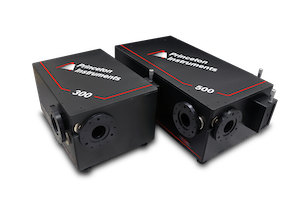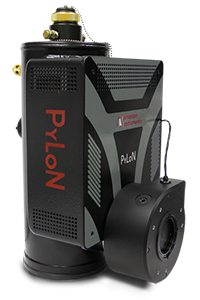Alexander Högele
arXiv
Open-cavity in closed-cycle cryostat as a quantum optics platform
Introduction
Scientists around Prof. Alexander Högele from the Center for NanoScience and Center for Quantum Science and Technology at the Ludwig-Maximilians-University in Munich, Germany published an article about a new experimental setup for very sensitive cavity quantum electrodynamics measurements in closed cycle cryostats. They demonstrate the effectiveness of their passive and active vibration control by measuring strong coupling of a single layer of the transition metal dichalcogenide (TMD) WSe2 to an optical cavity.

Solid state quantum materials such as quantum dots, TMDs and rare earth ions are promising platforms for applications of quantum physics for computation, sensing and information processing. The researchers describe that these materials have to be cooled to cryogenic temperatures to reduce environment noise, however Helium that has traditionally been used is expensive and limited. The challenge of closed cycle systems are vibrations that are of the order of 10 micro-meter but need to be closer to 40 pico-meter to be useful for cavity QED experiments. The new experimental system at the University of Munich has a series of passive vibration control mechanisms, but also allows for active control receiving feedback through light reflection and interference in the optical cavity over a 100kHz bandwidth.
The setup is tested on a TMD monolayer of WSe2, encapsulated in 2 sheets of hexagonal boron nitride. The cavity is built from a concave fiber mirror and the substrate of the sample. For spectroscopic measurements of the sample the researchers use a high resolution SpectraPro spectrograph with 750mm focal length and detection using a liquid nitrogen cooled camera. The spectra show the exciton resonance around 1.723eV. The cavity is brought in resonance with the exciton (moving the fiber from 50μm distance to 2.9μm distance) while measuring the transmission spectra of a super continuum light source. Strong coupling between the photon field and the TMD is visible as an anti-crossing of the transmission signal which is a basic signature of coupled quantum oscillators.
After this successful demonstration the researchers plan to apply their experimental setup to further measurements on a wide range of quantum materials, single photon sources and qubit materials. They think that the already excellent vibration isolation can be improved even further in the future.


